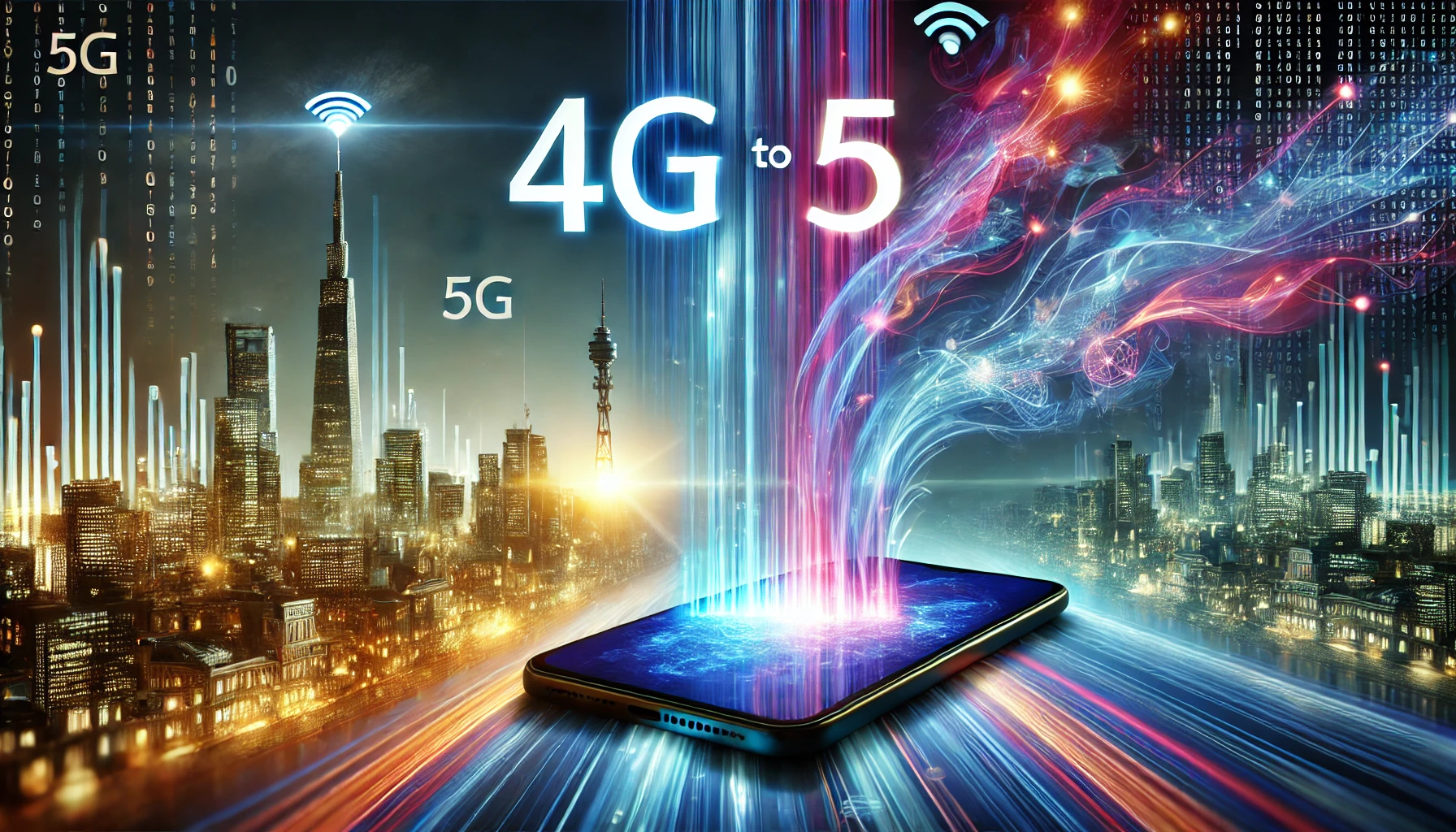With the rapid advancement of mobile network technology, many users are eager to switch from 4G to 5G to enjoy faster speeds, lower latency, and enhanced connectivity.
However, making the transition can seem complex, especially for those unfamiliar with the technical aspects of mobile devices and networks. This guide will walk you through the process of converting your 4G mobile setup to 5G in a simple, step-by-step manner.
Understanding 4G and 5G Technology
Before diving into the conversion process, it’s essential to understand what differentiates 4G and 5G.
4G Technology: 4G is the fourth generation of mobile network technology. It offers faster data speeds than its predecessor, 3G, and supports applications like HD video streaming, video calling, and mobile gaming. However, it has limitations in speed, latency, and the number of devices it can handle simultaneously.
5G Technology: 5G is the fifth generation and is designed to overcome the limitations of 4G. With download speeds up to 10 Gbps, lower latency (less than 1 millisecond), and the ability to connect millions of devices, 5G is ideal for advanced applications like IoT (Internet of Things), virtual reality, and autonomous vehicles.
Is Your Device 5G Compatible?
The first step in converting to 5G is determining if your device is 5G-compatible. Most modern smartphones released in recent years support 5G, but older models may not. Here’s how to check:
- Check Your Device’s Specifications: Search for your phone’s model online and review the specifications. Look for terms like “5G-enabled” or “5G-ready.”
- Visit the Manufacturer’s Website: Brands like Samsung, Apple, and Xiaomi list detailed specs on their official websites.
- Settings Menu: Navigate to your phone’s settings and check the network settings. If “5G” appears as an option under “Preferred Network Type,” your device is 5G-ready.
If your device isn’t compatible, you’ll need to upgrade to a 5G-enabled smartphone.
Does Your SIM Card Support 5G?
Even if your phone is 5G-compatible, your SIM card must support 5G networks. Most carriers provide 5G-compatible SIM cards. Follow these steps to confirm:
- Contact Your Network Provider: Reach out to your mobile carrier to check if your current SIM supports 5G.
- Upgrade Your SIM Card: If your SIM doesn’t support 5G, visit your carrier’s nearest store or their official website to request an upgrade.
- Activate the New SIM: Once you have a 5G SIM, insert it into your device and follow the activation instructions provided by your carrier.
Selecting a 5G-Compatible Data Plan
Having a 5G device and SIM isn’t enough; you’ll need a 5G data plan to access the network. Most carriers offer specific 5G plans, which may vary in price and benefits. Here’s how to choose:
- Compare Plans: Review plans from different carriers to find one that fits your budget and usage requirements.
- Unlimited Data Plans: Since 5G speeds consume more data, an unlimited plan is ideal for heavy users.
- Coverage Areas: Ensure your carrier has robust 5G coverage in your area before selecting a plan.
How to Activate 5G on Your Smartphone
Once you’ve confirmed that your device, SIM card, and data plan are 5G-ready, follow these steps to activate 5G on your phone:
- Update Your Software: Ensure your phone’s operating system is up to date. Manufacturers often release updates to optimize 5G performance.
- Enable 5G in Network Settings:
- Go to Settings > Mobile Network > Preferred Network Type.
- Select “5G/4G/3G/2G (Auto)” or a similar option.
- Restart Your Phone: Restart your device to apply the changes.
- Check Signal: Look for the 5G icon in your phone’s status bar to confirm connectivity.
Troubleshooting Common 5G Activation Issues
Sometimes, you may face challenges when switching to 5G. Here are solutions to common issues:
- No 5G Signal: Ensure you are in an area with 5G coverage. Use your carrier’s coverage map to confirm.
- SIM Card Not Recognized: Reinsert the SIM card or contact your carrier for assistance.
- Device Software Issues: Perform a factory reset if updates don’t resolve the problem. Back up your data beforehand.
Benefits of Upgrading to 5G
Switching to 5G offers numerous advantages:
- Faster Speeds: Stream videos, download large files, and play games with minimal lag.
- Improved Connectivity: Handle more devices simultaneously without network congestion.
- Lower Latency: Enjoy real-time communication and seamless virtual experiences.
- Future-Proof Technology: Stay ahead with a network that supports upcoming innovations.
Key Considerations Before Switching to 5G
- Cost: 5G devices and plans may be more expensive. Ensure the upgrade fits your budget.
- Coverage: Verify 5G availability in your region to avoid disappointment.
- Battery Consumption: 5G can drain your battery faster. Invest in a power bank if needed.
Conclusion
Converting from 4G to 5G doesn’t have to be daunting. By ensuring your device, SIM card, and data plan are 5G-compatible and following the steps outlined above, you can easily activate 5G and enjoy its benefits. Stay updated with your carrier’s offerings and advancements in mobile technology to make the most of your 5G experience.
